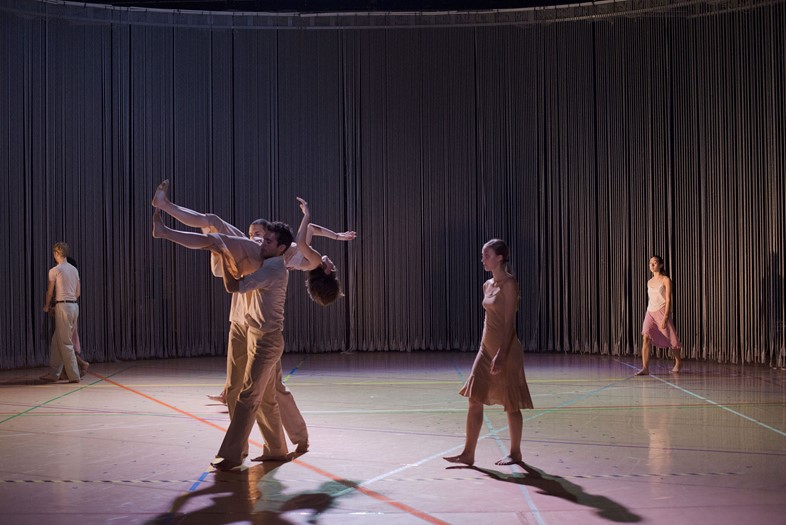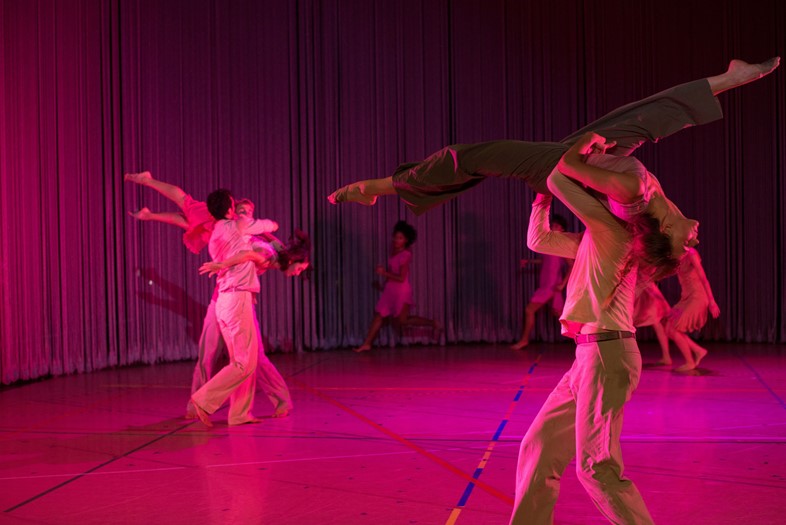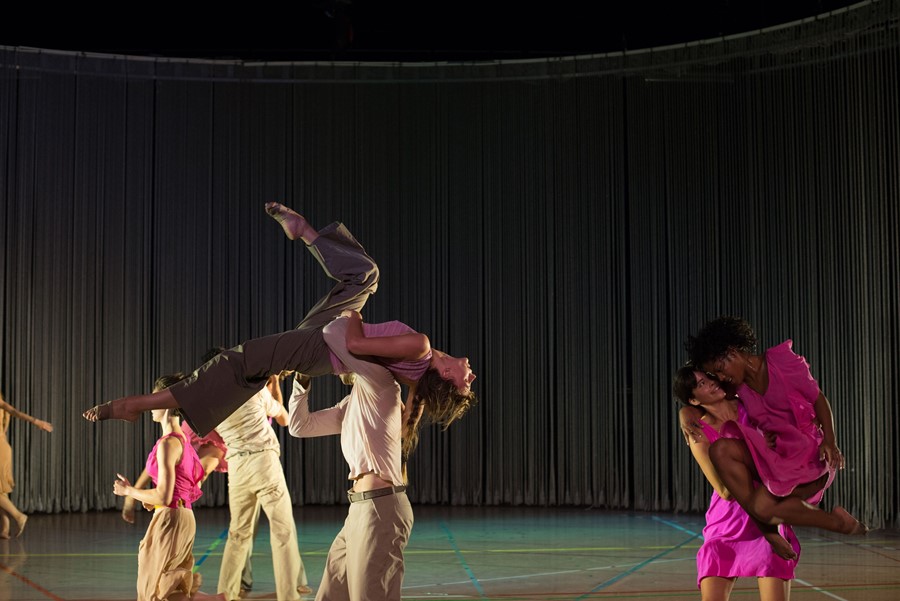Ahead of a new performance of Anne Teresa De Keersmaeker's Rain at Sadler’s Wells, the inimitable Belgian designer discusses the art of collaboration
The celebrated 2001 dance piece Rain, choreographed by Anne Teresa De Keersmaeker of the company Rosas, returns to London’s Sadler’s Wells next week. It’s a vibrant, abstract work exploring space and rhythm; a cast of ten dancers traverse the stage by leaping, running and rolling, with a momentum driven by the thrum of American composer Steve Reich’s score, performed live by musical ensemble Ictus.
There’s a warmth to the piece, enhanced by the costumes, which were designed by Dries Van Noten. Their colour palette evolves, moving through beiges, pinks and magentas that echo the energy of the movement. “Dance and fashion can easily relate to one another – clothing is a second skin that can emphasise movement, form and grace,” says Van Noten. “But designing costumes is much more specific than normal ready-to-wear. The design needs to encompass a movement as extreme or as subtle as the choreographer requires.”

In Rain, the costumes are minimalist and freeing. “The brief I received was to dress real people in their day-to-day life,” Van Noten remembers. The result is a stage full of individuals, wearing casual, loose skirts, dresses, trousers and shirts. They are barefoot. “The costumes aren’t overly designed – so you can see the people themselves,” says Cynthia Loemij, a Rosas dancer who worked on the original production.
For both the company and the designer, the collaboration was highly successful. “I particularly appreciate the ongoing partnership I have with Anne Teresa,” says Van Noten. “We started working together in 1998 and we are both passionately interested in the body and movement – each from our own privileged viewpoint. It’s a thoroughly enriching experience.”
One of the central inspirations behind De Keersmaeker’s choreography was Reich’s score. “The music is the structure, or how the piece should evolve,” explains Loemij. “The decisions are basically taken for us by the music.” Its pulse seems to power the movement: “It’s like a breathing – and the piece is very much built like dancers breathing in and out of the space, coming close to each other and opening up again.”

But that instinctive element is also working alongside a far more intellectual process. De Keersmaeker’s choreography method draws on formal principles including geometry and numerical patterns, and to a layperson, the underlying structure of Rain is like a mathematical formula. The dancers begin with two phrases of movement: one female and one male. “All the material is then derived from those phrases,” says Loemij: they are divided, sped up, slowed down, looped, and revealed to the audience piece by piece. In essence, the dancers are systematically working through every possible variation of one idea.
It may sound technical, but for the audience, the effect is transcendent and compelling. “There’s no emotion in a theatrical sense, but you feel an emotion in the abstraction of it,” explains Loemij. She fondly remembers performing in Rain the first time around: “The music overwhelms you somehow. I remember feeling strong as a group, which is a nice feeling.”

Rain by Anne Teresa De Keersmaeker/Rosas is at Sadler’s Wells in London on June 13 and 14. The production is also at the Edinburgh International Festival August 25-27, 2017.
